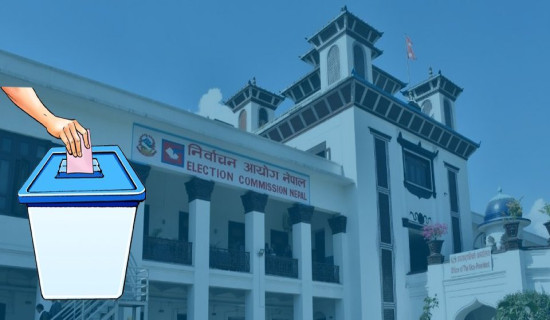- Saturday, 20 December 2025
Pedestrians Deserve Safer Streets
Roads, especially local streets, are a vital part of daily life in urban areas, serving vehicles and the people who walk, cycle, and live alongside them.
The condition and design of these streets create an environment that influences road users' mood, alertness, and health, affecting their productivity in social and economic activities.
While much attention is given to major infrastructures such as highways, flyovers, bridges, and underpasses, the state of Kathmandu's local streets often goes unnoticed. These small but essential roads are the lifelines for most ordinary people's access to basic services, markets, and daily activities.
According to the widely accepted Road Users' Hierarchy, road users should be prioritised based on their vulnerability, with those most at risk receiving the highest priority. This means that pedestrians and cyclists typically should have priority over motorised vehicles in road design, construction, and use. However, the reality on Kathmandu's streets is quite the opposite. Despite the growing urban density and increased foot traffic, pedestrian safety and comfort remain largely neglected.
Over the last decade, large segments of local roads have been widened and resurfaced. These efforts are often labelled as improvements but frequently come at the cost of pedestrian space. Roads are made smoother and wider for the convenience of vehicle owners, while basic infrastructure like footpaths and pedestrian crossings is either missing or poorly designed. This has made walking not only difficult but dangerous, especially for vulnerable groups like children, older people, and people with disabilities, who rely on walking on local roads more than others.
When local roads are widened, they become attractive alternative routes for drivers avoiding congested arterials, thus diverting traffic volumes into residential areas. Rather than calming traffic and protecting residents, such roads accelerate it, worsening pollution and noise in the regions that should be calm and walkable.
In Kathmandu, most local streets are missing proper footpaths and are often fragmented or limited to certain areas. Where footpaths do exist, they are often narrow, poorly maintained, or frequently blocked by utility poles, informal parking, or shopfront extensions. These obstructions often force pedestrians onto the road and expose them to direct traffic. Driveways built by property owners usually cut across footpaths, creating uneven surfaces and potential tripping hazards.
Adding to pedestrian woes is the lack of safe pedestrian crossings. Pedestrian crossings marked along local streets are generally not followed by vehicles. Vehicles are mostly dominated by overspeeding or ignoring pedestrians crossing the roads. To control speed, semi-circular concrete speed humps are commonly used in local streets. These are often too narrow and steep, causing sudden jolts that can be hazardous to drivers and pedestrians nearby.
Despite these challenges, there have been notable improvements along some of the city's major roads. Corridors such as Maitighar to Tinkune and Singha Durbar to Maitighar have seen the development of wider, more walkable footpaths that include tree plantations and tactile paving for improved accessibility. These initiatives have enhanced pedestrian safety and comfort and contributed to a greener, more aesthetically pleasing urban environment.
However, such improvements remain limited to a few arterial roads and have yet to reach the majority of local streets, where the need for safe pedestrian infrastructure is most urgent.
Having spent time in Sydney during my studies, I've witnessed firsthand how local streets can be designed with safety and accessibility in mind. Pedestrian crossings are present in key areas at close spacings and are well marked, often accompanied by 20 km/h speed limit signs and raised speed humps to force drivers to slow down. Outside every school, a school crossing supervisor ensures children cross safely, a visible commitment to pedestrian safety.
The driver's behaviour is most striking. In Sydney, vehicles are expected to stop even when a pedestrian merely approaches a crossing. This culture is enforced through awareness, speed cameras, signs, and strict regulations.
In Nepal, local governments are primarily responsible for constructing, modifying, and improving local roads, per the Local Government Operation Act, 2074 (2017). Thus, in the context of Kathmandu city, it is the responsibility of metropolitan cities such as Kathmandu and Lalitpur to ensure safe and walkable local streets.
According to the Nepal Urban Road Standard (NURS) 2076, the minimum clear width for a footpath should be 2.0 metres, with a preferred width of 2.4 metres. These standards aim to ensure sufficient space for pedestrian movement and accessibility.
Beyond footpath dimensions, integrating traffic-calming elements is essential for enhancing pedestrian safety, especially in areas with mixed traffic. Unfortunately, such features are largely absent or underutilised in Kathmandu's street design. Modern urban planning practices offer a variety of tools to reduce vehicle speeds, improve safety, and create more liveable streets.
One widely adopted measure internationally is using roundabouts, including mini-roundabouts and radial roundabouts, to manage intersections in residential and local street networks. According to the Austroads Guide to Road Design Part 4B, a leading reference for street design in Australia, roundabouts effectively reduce crash severity and improve traffic flow, particularly in low- to moderate-traffic environments.
Another proven intervention is the installation of raised pedestrian crossings, also known as wombat crossings, which increase the visibility of pedestrians and give them clear priority. Properly designed raised pedestrian crossings have been proven internationally to reduce pedestrian injuries by over 60%. Kathmandu's streets would benefit significantly from adopting such solutions.
Introducing low-speed zones, such as 10-20 km/h for local streets (as recommended by Nepal Urban Road Standard 2076), especially near schools, marketplaces, and town centres, is also a critical traffic calming measure that enhances safety in high pedestrian activity areas. In addition, physical street design elements such as chicanes (curved roadway alignments) and lane narrowing help to naturally slow down traffic and improve the pedestrian environment.
The future design and improvement of Kathmandu's local streets must prioritise a user hierarchy, where pedestrians are placed at the top of the design process. Creating a continuous and connected pedestrian footpath network is critical to this goal. This includes mapping all existing footpaths, identifying missing links, and ensuring the recommended minimum clear width of 2.0 metres. Footpath space should never be compromised when widening carriageways for vehicles. In cases where shops and houses have encroached on the official right-of-way, strict enforcement is needed to reclaim space for pedestrians. A city-specific Local Area Traffic Management (LATM) strategy should be developed, incorporating design guidelines for footpaths, pedestrian crossings, signage, traffic calming elements, and speed limit enforcement.
By adopting these measures, Kathmandu can move towards a pedestrian-first approach, creating safer, greener, and more accessible streets for everyone.
(Shrestha has completed a master's in professional engineering from Sydney University of Technology, Australia, and a master's in transportation engineering from Nepal Engineering College.)


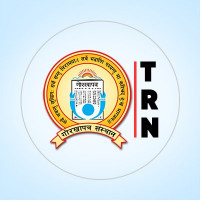



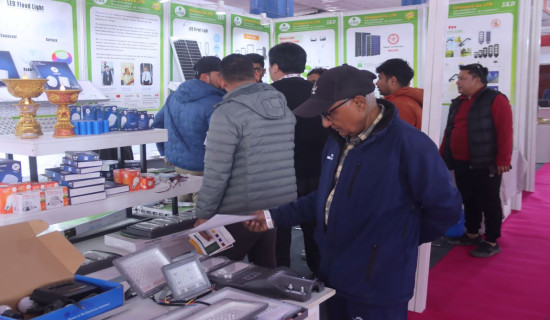


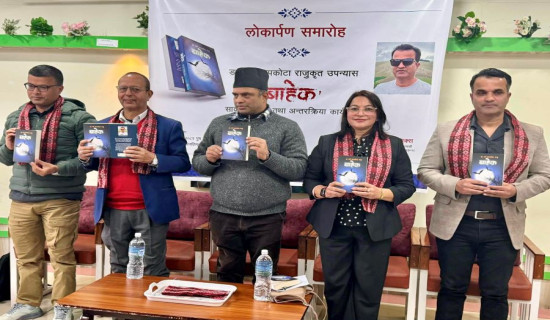
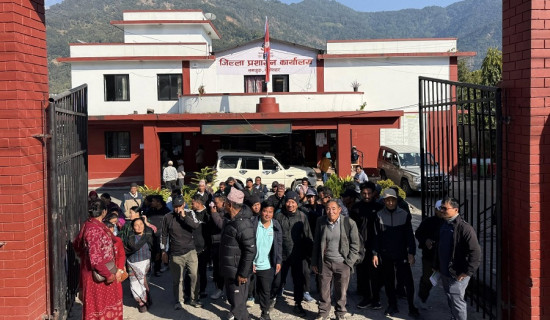
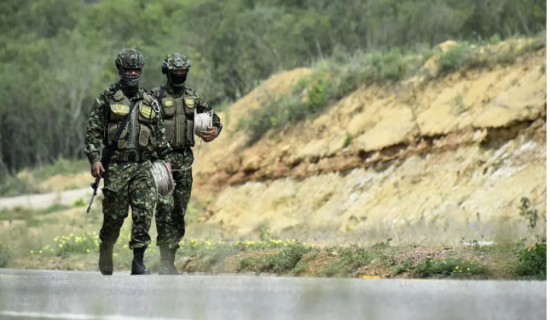

-original-thumb.jpg)
